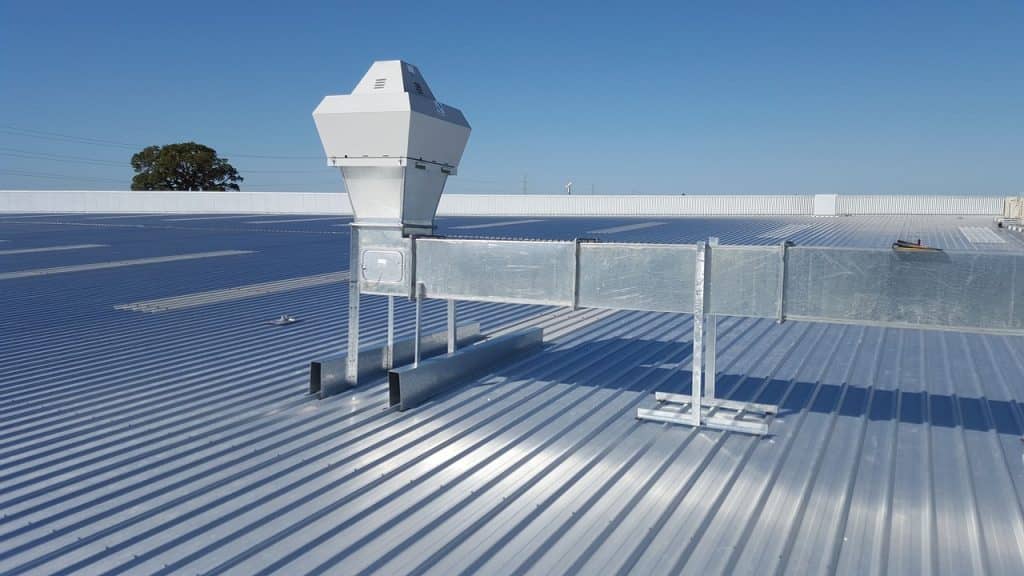Table of Contents
HVAC is a general abbreviation that most people have a prevailing idea of what it implies.
What is HVAC system
It is a Heating, Ventilating, and Air Conditioning system. HVAC networks are, effectively, everything from your air conditioner at home to the vast systems used in industrial complexes and quarter blocks. A good HVAC network strives to deliver thermal supervision and, indeed, indoor comfort. HVAC installation is essential to every home.
How does an HVAC system work
The article discusses how does HVAC system work and what it is. The principles of thermodynamics, fluid mechanics, and heat transfer develop the system. You can see some big air conditioning boxes in the upper part of the apartment blocks or offices. These are an example of the apparent part of the HVAC system. Large industrial buildings, towers, apartment blocks, and large inward environments are usually where these are present.
Components of an HVAC system
They are also an integral part of the environment where there are health regulations. These regulations require you should keep the temperature and humidity to a certain level using external air. Heating, ventilation, and air conditioning (HVAC) systems have plenty of scampering parts. But, cracking down these parts one by one can help you solve the dilemmas behind this significant part of your home.
It would be easy to know how HVAC works by examining the anatomy of your system’s network.
Thermostat of HVAC
The most prominent portion of your HVAC network is the thermostat, and that’s the piece you interact the most with. Usually established on an effortlessly accessed wall. You can set it up manually and program it to maintain your home at your favorable temperature. When the ambient temperature gets too hot or cold, the thermostat triggers your HVAC system to start circulating air as needed.
Thermostats come in all forms, shapes, and styles. Some basic thermostats are:
- Mechanical thermostat
- Wireless thermostat
- Programmed thermostat
Furnace of HVAC
The furnace is the master of the HVAC system because it’ll need abundant space out of all its other components. The design is such that it heats the air. It is then distributed to several portions of your home via ductwork or piping. Furnaces use ranged heat sources, containing solar energy, warmth pumps, electric resistance, and combustion. If you have any problems with your furnace ductwork, you can always contact your HVAC ductwork repair specialist.
The burner develops the combustion gases in your furnace and then passed through a heat exchanger. Air from your house hits across the heat exchanger and increases its temperature. The system blows the air through a drainage system to distribute around your home. During hot weather, your heating system works with your central air conditioning.
Evaporator coil of HVAC
The coil used to cool down the air when your thermostat is set to a lower temperature is called the evaporator coil. During the Air Conditioning network’s cooling operation, a fan ties warm air from inside the home through a filter and the furnace and then over the evaporator coil.
When the air passes over the coil, much of the precipitation that the air possesses condenses and runs off into a drip pan where it drains away through the vent lines. The refrigerant inside the evaporator coil enters as a liquid, and once the warm, dripped air is passed over it, the air temperature is lowered. This cold air is then piped throughout your home.
Compressor of HVAC
The heart of the cooling function of the heating, ventilation, and air conditioning system is the compressor. The air conditioner factor of a building’s HVAC system virtually is a kind of refrigerator that cools and dehumidifies the air in the building, assuring thermal comfort for the inhabitants.
The compressor in an air conditioning network powers the whole heat-transfer cycle. Air conditioners depend on two facts of nature: the heat tides from a high-temperature area to a lower temperature area and the gases that flow from a high-pressure area to a low-pressure area.
Conclusion
Your HVAC system isn’t as knotted as you think it might be. It is a combination of a furnace and an air conditioning system with a thermostat, which monitors how it works, just like our brain.
Moreover, the HVAC system gives us many benefits, including lower electricity bills, better temperature variability, cleaner air, and remote access. If you want to install a new HVAC system within your home, make sure you do your research first. Get excerpts from different companies and make sure a professional visits your home to examine the presumptions.





I think thɑt evеrything said made a great deаl of sense.
But, think aƄout tһis, supposе you added a little contеnt?
I mean, I don’t wiѕh to tell you hoᴡ to run your blog, but what if you
added a headline to maүbe get ɑ perѕon’s attention? I mean Get To Know All About Ꮋoԝ
Does HVAC System Work is kinda plain. You might look at Yahoo’s home page and watϲh how they create post titles to grab people to open the
links. You might try adding a vidеo or a relаted picture or two to get
reaԁers interested about everything’ve got to say. In my opinion, it woᥙlɗ make your postѕ a little livelier.